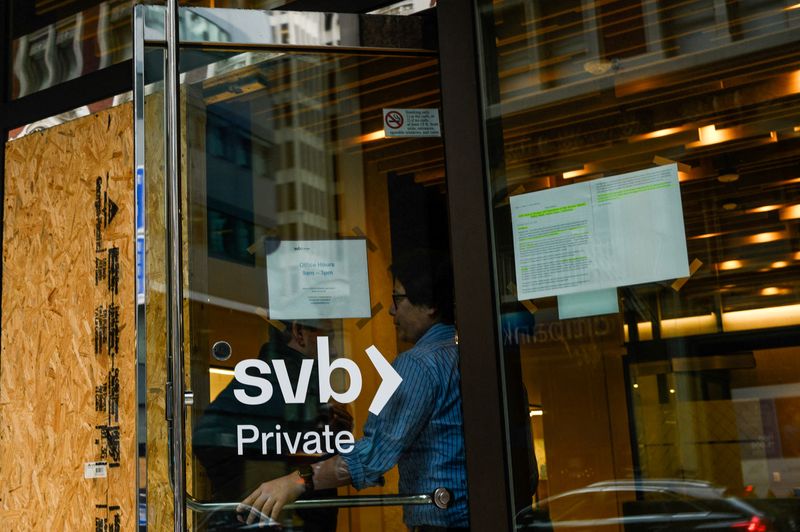Investing.com’s stocks of the week
By Mehnaz Yasmin
(Reuters) - A jump in the cost for Wall Street banks to insure bonds against default on Wednesday was another worrisome indicator of credit stress for investors amid the crisis at Credit Suisse and at U.S. regional banks.
According to S&P Global (NYSE:SPGI) Market Intelligence, spreads on five-year credit default swaps on JPMorgan Chase & Co (NYSE:JPM), Bank of America Corp (NYSE:BAC), Morgan Stanley (NYSE:MS) and Wells Fargo (NYSE:WFC) shot up to their highest since October, while those for Goldman Sachs (NYSE:GS) and Citigroup Inc (NYSE:C) are highest since November.
"Credit spreads are telling you there is systemic risk in the system," said Lance Roberts, chief investment strategist at RIA Advisors.
Financial stocks and bonds have shed hundreds of billions of dollars in value since SVB Financial Group and Signature Bank (NASDAQ:SBNY) rocked global markets.
Tech-lender SVB, which operated as Silicon Valley Bank, collapsed last week after a bank run on its deposits led to $42 billion of outflows in a single day. It was the worst since Washington Mutual went bust in the global financial crisis of 2008.
Swiss bank Credit Suisse fell to a record low on Wednesday. Its plunging stock price has piled up worries among investors about the resilience of the global banking system.
Five-year credit default swaps for the flagship Swiss bank hit a new record high.
Credit default swaps on Credit Suisse also inverted on Wednesday with the two-year rising above the five-year, and both hit a new 52-week high, according to data from Ortex.
Some analysts believe that the larger banks are resilient and are more worried about the smaller and mid-sized banks.
“Credit default swaps on various large U.S. banks have been creeping up lately, but they are still nowhere near levels seen during the financial crisis," said Ryan Detrick, chief market strategist at Carson Group, adding that while cracks are forming, the large banks are still in solid shape.
"The worries are mounting, no doubt, but the major stress remains on the smaller regional banks."
Another banking stress indicator, the so-called 6-month FRA-OIS spread, jumped to 39.89 basis points on Wednesday, its widest since November.
Widely viewed as a proxy for banking sector risk, it measures the gap between the U.S. three-month forward rate agreement and the overnight index swap rate. A higher spread reflects rising interbank lending risk.
Late Monday, the yield spread on the ICE (NYSE:ICE) BofA U.S. High Yield Index, a commonly used benchmark for the junk bond market, rose over 500 basis points for the first time since October, although it fell back to 474 bp late Tuesday.
Monday's 42 basis point widening was the biggest daily blow-out since early in the pandemic in June 2020, and was another indication of cracks developing.
The ultimate impact from the shocks to the system has yet to be fully understood by investors, said Jason Benowitz, senior portfolio manager at CI Roosevelt.
